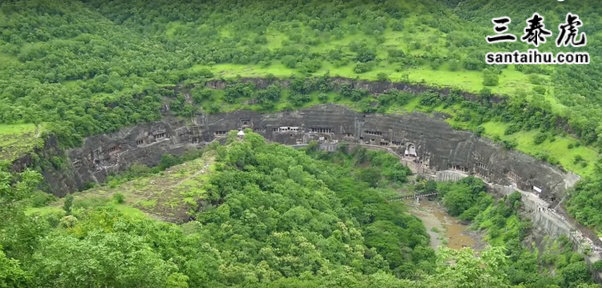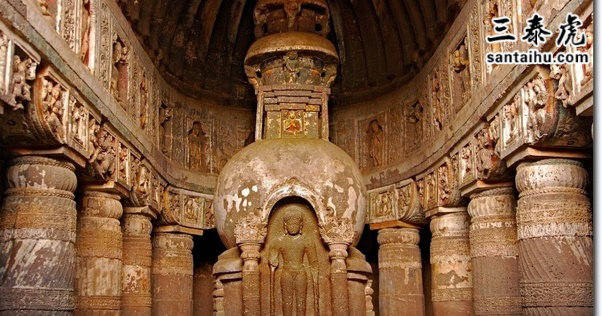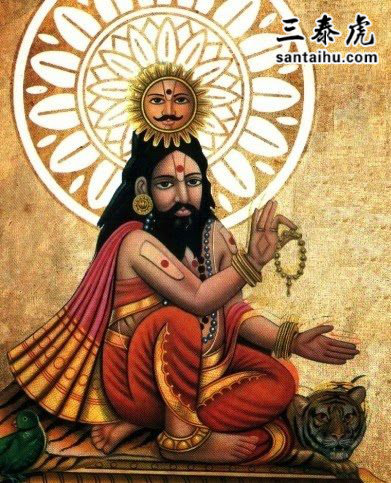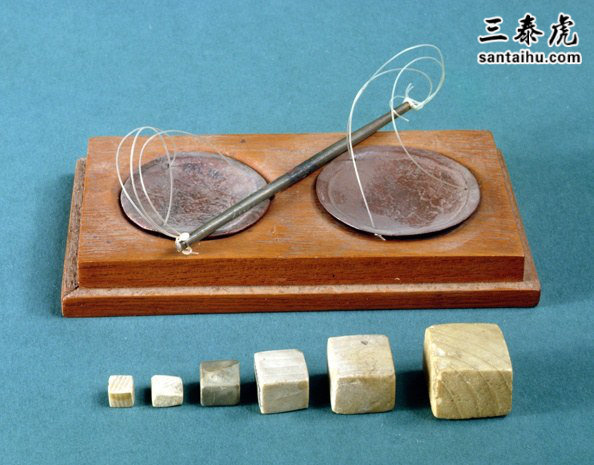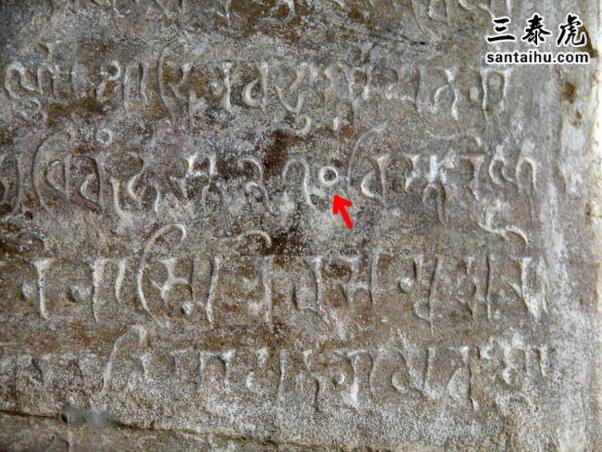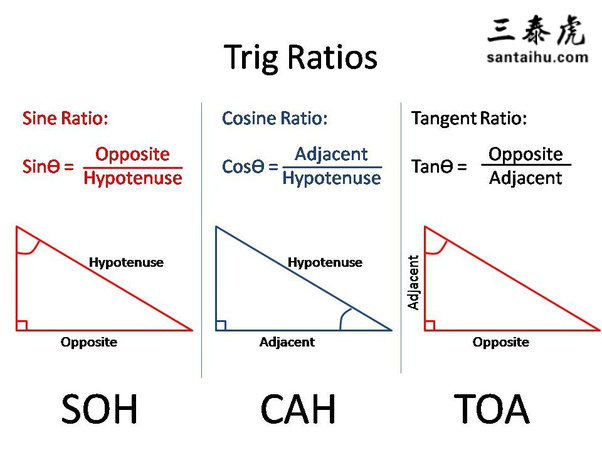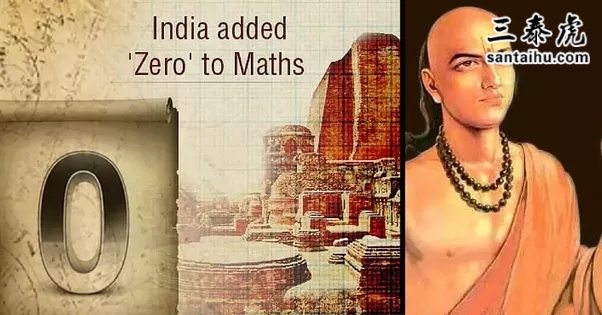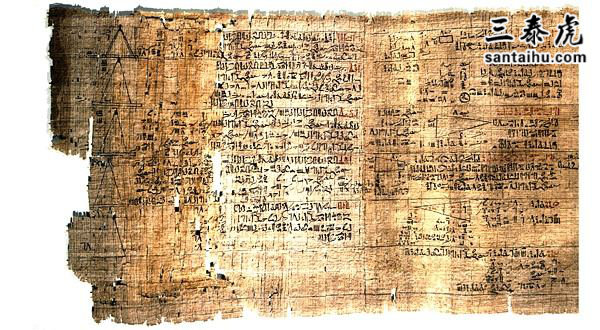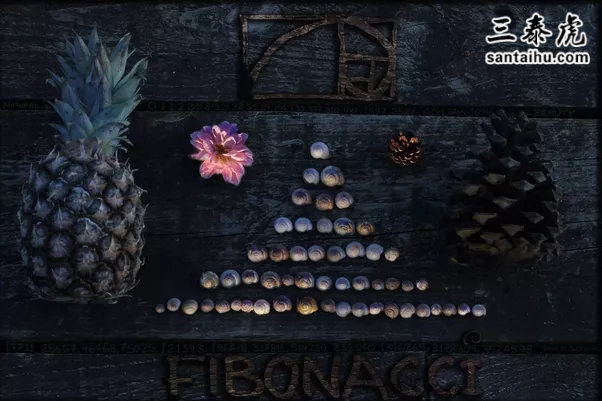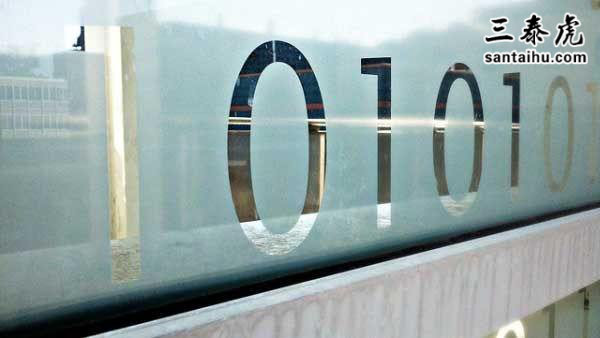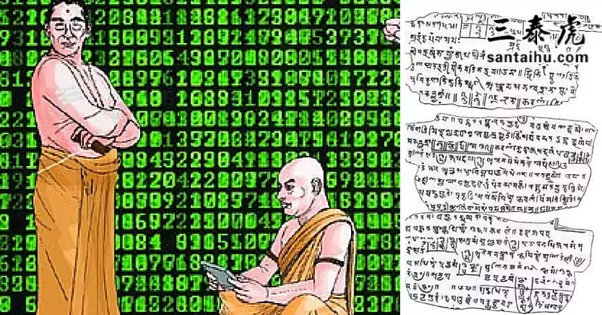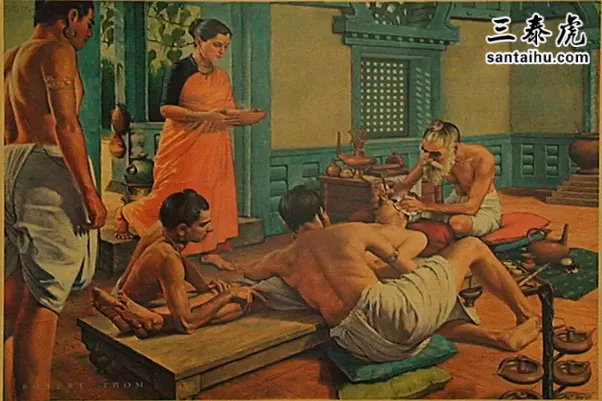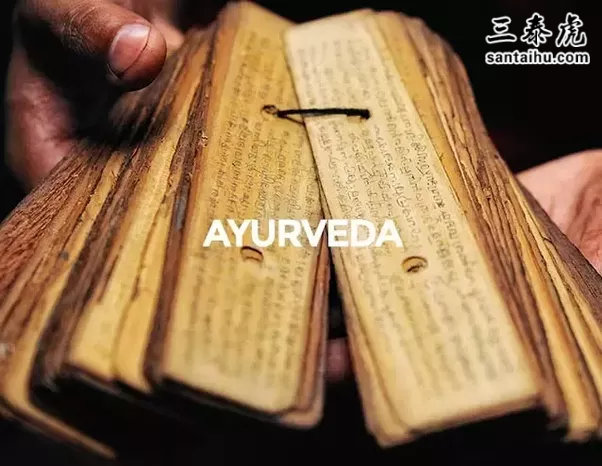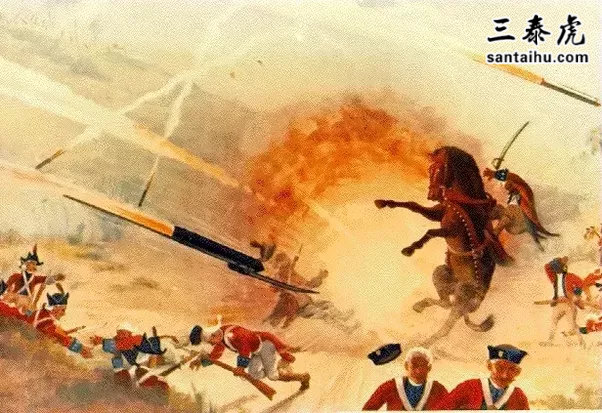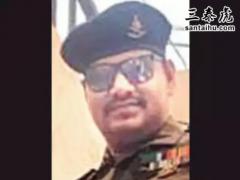印网友:古印度文明被高估了吗
Is ancient India overrated?古印度文明被高估了吗? Quora读者的评论:Atul Bansal, History Buff | ISROite | IITian | CSE
Is ancient India overrated?
古印度文明被高估了吗?
Quora读者的评论:
Atul Bansal, History Buff | ISROite | IITian | CSE Aspirant
Let us take the example of Ajanta Caves to understand this.
Ajanta Caves are a group of 29 caves dedicated to Buddhism, cut from a single granite rock mass of Sahyadri Hills (Western Ghats). They were cut from 2nd century BC to around 5th century AD by Buddhist monks by carving a U-shaped Cliff.
让我们以阿旃陀石窟为例来分析一下。
阿旃陀石窟是由29个佛教石窟组成的石窟群,是在萨哈德里山(西高止山脉)的一个花岗岩独岩体上雕刻出来的。它们是在公元前2世纪到公元5世纪左右,由佛教僧侣在这个U形悬崖上雕刻而成的。
The caves were cut in a manner to align with key cosmological events.
Cave No. 19 and Cave No. 26 align perfectly with winter solstice and summer solstice respectively
Winter solstice - When Sun reaches southern most position as seen in Northern Hemisphere . It is usually around 22 December. It marks the beginning of northward movement or ascent of sun.
Summer solstice - When Sun reaches northermost position as seen from northern hemisphere. It is usually around 21 June. It marks the beginning of southward movement or descent of sun
On Winter solstice, Sun shines perfectly into Cave No. 19 and lightens Buddha’s statue. Buddha is shown in standing posture which symbolically means that force of divine sun is descending into a spiritually prepared person.
译文来源:三泰虎 http://www.santaihu.com/47117.html 译者:Joyceliu
这些石窟的雕刻方式与重要的宇宙事件一一对应。
第19洞、第26洞分别与冬至、夏至完全吻合。
冬至-太阳到达北半球最南端的那一天。通常在12月22日前后。它标志着太阳向北或向上移动的开始。
夏至-太阳到达北半球最北端的那一天。通常在6月21日前后。它标志着太阳向南或向下移动的开始。
冬至那天,阳光会完全照进19号石窟,照亮佛像。佛陀展现站立的姿势,象征性地意味着神圣的太阳的力量正降临到一个在精神上已做好准备的人身上。
On Summer solstice, Sun shines perfectly into Cave No. 26 and lightens Buddha’s statue. Buddha is shown seated with his feet on pedestal. This shows ascendance of Buddha into heavens.
To put it differently, ancient Indians more than 1500 years ago, using simple tools like chisels and hammers, carved 29 caves from a single large hard rock mass in such a way that it perfectly aligns with sun’s rays on particular days.
This shows advanced knowledge of astronomy, civil engineering and architecture. Achievements in other fields were equally marvelling.
The achievements of Ancient India is not overrated but underrated.
夏至时,阳光完美地照进26号石窟,照亮了佛像。佛陀展现端坐的姿势,脚踩在底座上。象征着佛陀升入天堂的景象。
换句话说,1500多年前,古印度人用凿子、锤子等简单工具,从一块巨大的坚硬岩体上凿出29个洞穴,并在特定的日子里完美地与太阳光线对应起来。
这显示了古印度在天文学、土木工程和建筑学的先进知识。其他领域的成就同样令人惊叹。
古印度的成就并未被高估,而是被低估了。
Pak L. Huide, Undergrad at University of Toronto
Seriously? If anything, ancient India is sorely UNDERRATED.
I mean, I'm an ethnic Chinese living in Canada. But when I was growing up in Canada, I knew jackshit about India. Besides maybe curry.
I mean, people here have a vague understanding of Chinese history but they have NO idea about Indian history. For example, most people know that the Middle Kingdom is how China referred to herself but how many people know about Bharat? How many know about even the Guptas? People know that China was famous for ceramics and tea but how many people know about ancient India’s achievement in metallurgy? People know about the Great Wall, but how many know about the great temples of southern India?
This is partly due to the lackluster historical records that ancient Indians kept and also partly because modern Indians have a tendency to look down upon their ancient heritage and view western ideas and ideals as superior. China also has this problem but not nearly to the same extent.
Ancient India was a hub of culture and technology and the absolute capital of world spirituality. I could talk about India for hours but it's hard to type on the phone. In short, India is many things but OVERRATED is definitely not one of them.
你没开玩笑吧?如果非要说,古印度的成就是被严重低估的。
我是说,我是加拿大华人。但我从小在加拿大成长,我对印度一无所知。大概也就知道咖喱吧。
我的意思是,这里的人对中国历史多少有点模糊的认知,但他们对印度历史一无所知。例如,大多数人知道中国人认为自己的国家是中央王国,但有多少人知道婆罗多呢?有多少人知道笈多王朝?人们知道中国的陶瓷和茶叶全球闻名,但是有多少人知道古代印度在冶金方面取得的成就呢?人们知道长城,但是有多少人知道印度南部的宏伟寺庙呢?
部分原因是由于古代印度人历史记载做的不够好,也有部分原因是由于现代印度人有一种倾向,看不起他们的古老文明,认为西方的思想和理念更为优越。中国也有这个问题,但没那么严重。
古印度是文化和技术的中心,是世界精神的绝对中心。我可以对印度谈上好几个小时,但用手机打字太难了。简而言之,印度有很多东西,但绝对没有被高估。
Satyarth Routroy, Indian by birth, Indian by soul, Indian by heart.
- Is ancient India overrated?
On the contrary, ancient India is highly underrated.
We are one of the longest living continuous ancient civilization. But how many people around the world know that? Ancient India had been the hub of art, architecture, literature and technology- but most people are totally unaware of that. Forget about non-Indians, many Indians of the 21st century are unaware of our ancient and past glory.
The discovery that the earth is spherical is credited to the Greek philosopher Aristotle, who was born in 384 BCE. However, very few people know that a man from ancient India established the idea of “spherical earth” during the 8th-9th century BCE. The man was called Yajnavalkya who first discovered that the earth is round. He was the first to propose the heliocentric system of the planets. In his work Shatapatha Brahmana, he proposed that the earth and the other planets move around the sun. He also calculated the period of one year as 365.24675 days. This is only 6 minutes longer than the current established time of 365.24220 days[1].
古印度被高估了吗?
不,相反,古印度被严重低估了。
我们是世界上最古老的文明之一。但是世界上有多少人知道呢?古印度曾是艺术、建筑、文学和科技的中心,但大多数人完全没有意识到这一点。忘掉印度以外的人吧,21世纪的许多印度人对我们古老和历史的荣耀根本不了解。
世人普遍认为地球是球形的这一发现归功于希腊哲学家亚里士多德,他生于公元前384年。然而,几乎没人知道一位古印度人曾在公元前8 -9世纪就提出了“球形地球”的概念。这个人叫雅杰那瓦基亚,他是第一个发现地球是个大圆球的人。他是第一个提出行星日心说的人。在他的著作《百道梵书》中,他提出地球和其他行星围绕太阳运转。他还计算出一年的周期为365.24675天。这只比目前测定的365.24220天[1]多了6分钟。
Take the example of Kung Fu. The whole world knows about the martial art called Kung Fu. The person who founded Kung Fu was none other than a prince of the Pallava dynasty from Kanchipuram, Tamil Nadu who visited China during the 5th century CE. He became the 28th patriarch of Buddhism and established the Shaolin temple and founded the martial art which became world famous today[2]. That prince was called Bodhidharma.
But how many people know about that Kung Fu and Shaolin was founded by an Indian? Precisely, if we Indians are unaware of our heritage, why should we expect that someone else will know about our history and achievement?
The achievements of ancient Indians are lost in obscurity. Our ancestors had invented many ways which eased the basic life of a common man. These inventions may seem primitive today, but we can’t ignore the fact that these were revolutionary achievements during their era.
The Indus Valley civilization is known for the broad and the sanitized drainage system which was no less than a miracle during those ancient times. But how many people know that the ancient Indians from Indus Valley Civilization (IVC) were the first to invent a flush toilet[3]?
以中国功夫为例。全世界都知道一种叫中国功夫的武术。中国功夫的创始人正是来自泰米尔纳德邦坎奇普兰的帕拉瓦王朝的一位王子,他于公元5世纪访问了中国。他成为了佛教的第28任宗师,建立了少林寺,并创立了武术,在今天全球闻名。那个王子叫菩提达摩。
但是有多少人知道中国功夫和少林是由印度人创立的呢?准确地说,如果我们印度人不知道我们的传统,我们又怎能指望别人了解我们的历史和成就?
古代印度人的成就在默默无闻中销声匿迹了。我们的祖先发明了许多改善普通人的基本生活的方法。这些发明在今天看来似乎很原始,但我们不能忽视这一事实,这些发明在他们那个的时代,都是革命性的成就。
印度河流域文明以其广阔而清洁的排水系统而闻名,这在古代是一个奇迹。但是有多少人知道印度河流域文明的古印度人是最先发明抽水马桶[3]的人呢?
The people around the world use rulers to measure everything. How many people know that Indus Valley Civilization was the first to invent the rulers[4]? A ruler has been found at Lothal which is 4400 years old. Not only this, the people of IVC were the first to invent buttons[5]. The world knows that the Chinese discovered the art of weaving silk dresses. How many people know that IVC people were the first to weave dresses made of cottons[6].
The ancient Indians were first to invent the weighing scales. Archaeologists have discovered weighs and scales from the excavation sites of Harappa, Mohenjodaro, Lothal etc[7]. These scales were extensively used for trading.
世界各地的人们都用尺子来丈量一切。有多少人知道印度河流域文明是最先发明尺子[4]的人呢?在洛塔尔发现了一把有着4400年历史的尺子。不仅如此,印度河流域文明的人也是最早发明纽扣[5]的人。全世界都知道中国人创造了丝制品的纺织技术。有多少人知道印度河流域的人是最早把棉花织成衣服的人?
古印度人最先发明了磅秤。考古学家在哈拉帕、摩亨佐达罗、洛塔尔等地的发掘现场发现了砝码和秤。这些秤被广泛用于贸易之中。
Ancient India has given Yoga to the world- which is widely practiced almost all over the world to keep people fit and fine. Models, supermodels, film stars, athletes, etc. regularly attends Yoga session to keep themselves fit.
Aryabhatta, Brahmagupta and Bhaskaracharya were the three eminent mathematicians from ancient India who established the concept of zero as a mathematical value in different eras. Brahmagupta was the first to invent a symbol for the value “shunya” (zero)[8]. Bhaskaracharya was the first to use it as algebra. The oldest inscription of zero can be found at the Chaturbhuj temple in Gwalior fort[9].
古代印度把瑜伽传播到了全世界,瑜伽在世界各地广泛流传,让人们保持身材和健康。模特、超级名模、电影明星、运动员等都坚持学习瑜伽课程,保持身材。
阿雅巴塔、布拉玛格塔和巴斯卡拉查里亚是古代印度三位杰出的数学家,他们在不同的时代确立了零作为数学值的概念。布拉玛格塔是第一个发明表示“shunya”(零)[8]的符号的人。巴斯卡拉查里亚是第一个把它用作于代数中的人。最古老的“零”字铭文出现在瓜利奥尔堡的查图布伊寺。
Ancient Indians were pioneers in the field of chemistry too. The person who first invented the “atomic theory” was none other than Acharya Kanad from ancient India[10]. He explained the atomic theory using terms like “Anu”(atom) and “Paramanu”(nucleus).
Ancient Indians were advanced in medical science too. The great physician of his time, Sage Shusrut was the first to carry out different surgeries which included plastic surgery and cataract surgery[11]. His works are composed in his book called Shusrut Samhita (The works of Shusrut). The world hardly knows about Charak, the great specialist in medicine from ancient India. He was the first physician to establish the problems and medicinal treaties in fields like physiology, embryology, digestion, sexual disease, immunity, etc. His works on Ayurveda is composed as a book called Charak Samhita (The works of Charak).
The Chera dynasty of Tamil Nadu invented the idea of producing finest steel by heating black magnetite ore along with carbon. The mixture was kept in a crucible and heated in charcoal furnace. The Wootz Steel[12] originated from India, but today, is popular as Damascus Steel.
Ancient Indians were pioneers in the field of chemistry too. The person who first invented the “atomic theory” was none other than Acharya Kanad from ancient India[10]. He explained the atomic theory using terms like “Anu”(atom) and “Paramanu”(nucleus).
Ancient Indians were advanced in medical science too. The great physician of his time, Sage Shusrut was the first to carry out different surgeries which included plastic surgery and cataract surgery[11]. His works are composed in his book called Shusrut Samhita (The works of Shusrut). The world hardly knows about Charak, the great specialist in medicine from ancient India. He was the first physician to establish the problems and medicinal treaties in fields like physiology, embryology, digestion, sexual disease, immunity, etc. His works on Ayurveda is composed as a book called Charak Samhita (The works of Charak).
The Chera dynasty of Tamil Nadu invented the idea of producing finest steel by heating black magnetite ore along with carbon. The mixture was kept in a crucible and heated in charcoal furnace. The Wootz Steel[12] originated from India, but today, is popular as Damascus Steel.
古印度人也是化学领域的先驱。第一个发明“原子理论”的人就是古印度的阿查里亚·卡纳德。他用“anu”(原子)和“paramanu”(原子核)等术语解释了原子理论。
古印第安人在医学上也很先进。作为当时的伟大医生,Sage Shusrut是第一个进行多种手术的人,包括整形手术和白内障手术[11]。他的手术被写入他的书中,书名为《舒斯鲁特的手术记录》。世人几乎不知道查拉克这位古印度的医学专家。他是第一位在生理学、胚胎学、消化学、性疾病、免疫学等领域确定病症并进行医学治疗的医生。他对阿育吠陀上的研究被写成一本书,名为《查拉克的著作》。
泰米尔纳德邦的希拉王朝想出了一个办法,通过加热黑色磁铁矿和碳来生产最好的钢。混合物放置在坩埚中,用木炭炉加热。伍兹钢铁[12]起源于印度,但今天,伍兹钢铁和大马士革钢铁一样普及。
Sayak Biswas, Indian and proud
Most of us will know this branch of mathematics, right?
我们大多数人都知道这个数学分支,对吧?
One of the very first proponents of trigonometry was a man called Aryabhatta. He is also credited for invention of “zero”, the number without which any modern-day calculation is impossible.
His studies of trigonometry was roughly around the same period when other civilizations like Greeks, Egyptians were studying about this. But Aryabhatta’s methods were comparatively easier than the clumsier Greek versions. Later his works were adopted by Arabs, and his name was there in al-Kwarizmi’s book on algebra.
最早提出三角法的人中,有一个叫阿雅巴塔的人。他还发明了“零”这个数字,没有这个数字,任何现代计算都是不可能进行的。
他对三角学的研究与希腊、埃及等其他文明国家的研究大致处于同一时期。但阿雅巴塔的方法比希腊人笨拙的方法要简单得多。后来他的研究被阿拉伯人采用,他的名字出现在al-Kwarizmi的代数书中。
Dharm Sidhu, Director, Software Engg
Well in my personal opinion, The person might intended a punk as “Ancient India” is highly under rated and to support my opinion, I will try to relate them discoveries happened in past which are still very much applicable in modern world
在我个人看来,这个人可能是个很无知的人,因为“古印度文明”被高度低估了,为了阐明我的观点,我会试着把过去发现的事联系起来,这些发现在现代世界仍然非常适用
TOP 13 DISCOVERIES
1.The Idea of Zero
13个最伟大的发现
1. 零的概念
Little needs to be written about the mathematical digit ‘zero’, one of the most important inventions of all time. Mathematician Aryabhata was the first person to create a symbol for zero and it was through his efforts that mathematical operations like addition and subtraction started using the digit, zero.
The concept of zero and its integration into the place-value system also enabled one to write numbers, no matter how large, by using only ten symbols.
关于数学数字“零”——有史以来最重要的发明之一,无需我再赘述。数学家阿雅哈塔是第一个为零创建符号的人,正是通过他的努力,加减法等数学运算开始使用数字“零”。
零的概念和其与位值系统的结合也使得一个人,不管遇到多大的数,都可以只用10个符号来书写。
2.The Decimal System
2. 十进制系统
India gave the ingenious method of expressing all numbers by means of ten symbols – the decimal system. In this system, each symbol received a value of position as well as an absolute value.
印度发明了一种巧妙的方法,用十进制来表达所有的数字。在该系统中每个符号都有一个位值和一个绝对值。
3.Numeral Notations
3. 数字符号
Indians, as early as 500 BCE, had devised a system of different symbols for every number from one to nine. This notation system was adopted by the Arabs.
Centuries later, this notation system was adopted by the western world who called them the Arabic numerals as it reached them through the Arab traders.
早在公元前500年,印度人就为从1到9的每一个数字设计了一套不同的符号系统。这种记数法被阿拉伯人采用。
几个世纪后,这种记数法被西方国家采用,因为是通过阿拉伯商人传过来的,所以他们称之为阿拉伯数字。
4. Fibbonacci Numbers
4. 斐波纳契数
The Fibonacci numbers and their sequence first appear in Indian mathematics as mātrāmeru, mentioned by Pingala in connection with the Sanskrit tradition of prosody. Later on, the methods for the formation of these numbers were given by mathematicians Virahanka, Gopala and Hemacandra , much before the Italian mathematician Fibonacci introduced the fascinating sequence to Western European mathematics.
斐波纳契数列及其序列最早出现在印度数学体系,是由Pingala提出的,跟与梵语韵律的传统相关联。后来,维拉罕卡、戈帕拉和赫玛昌德拉三位数学家给出了这些数字的形成方法,这远远早于意大利数学家斐波那契将这个迷人的数列引入西欧数学的时间。
5. Binary Numbers
5. 二进制数
Binary numbers is the basic language in which computer programs are written. Binary basically refers to a set of two numbers, 1 and 0, the combinations of which are called bits and bytes. The binary number system was first described by the Vedic scholar Pingala, in his book Chandahśāstra, which is the earliest known Sanskrit treatise on prosody ( the study of poetic metres and verse).
二进制数是编写计算机程序的基本语言。二进制基本上是指两个数字1和0的集合,它们的组合称为位和字节。二进制数系是由吠陀学者Pingala在他的书《Chandahśāstra》中提出的——最早的梵文韵律学论述(针对诗歌格律和诗节的研究)。
6. Chakravala method of Algorithms
6. 查克拉瓦拉算法
The chakravala method is a cyclic algorithm to solve indeterminate quadratic equations, including the Pell’s equation. This method for obtaining integer solutions was developed by Brahmagupta, one of the well known mathematicians of the 7thcentury CE. Another mathematician, Jayadeva later generalized this method for a wider range of equations, which was further refined by Bhāskara II in his Bijaganita treatise.
查克拉瓦拉法是求解不定二次方程(包括佩尔方程)的循环算法。这种获得整数解的方法是由布拉马库塔提出的,布拉马库塔是公元前7世纪著名的数学家之一。另一位数学家贾亚德瓦后来将这种方法推广到更广泛的方程组中,并在他的《代数学》论文的婆什伽罗2中做了更进一步的完善。
7. Ruler Measurements
7. 测量尺
Excavations at Harappans sites have yielded rulers or linear measures made from ivory and shell. Marked out in minute subdivisions with amazing accuracy, the calibrations correspond closely with the hasta increments of 1 3/8 inches, traditionally used in the ancient architecture of South India. Ancient bricks found at the excavation sites have dimensions that correspond to the units on these rulers.
在哈拉帕遗址的发掘工作中,人们发现了由象牙和贝壳制成的尺子或线形测量工具。精确到令人惊叹的细分刻度,刻度与南印度古代建筑中传统使用的哈斯特增量1 3/8英寸非常接近。挖掘现场发现的古砖的尺寸与这些尺子的单位相呼应。
8. A Theory of Atom
8. 原子理论
One of the notable scientists of the ancient India was Kanad who is said to have devised the atomic theory centuries before John Dalton was born. He speculated the existence of anu or a small indestructible particles, much like an atom. He also stated that anu can have two states — absolute rest and a state of motion. He further held that atoms of same substance combined with each other in a specific and synchronized manner to produce dvyanuka (diatomic molecules) and tryanuka (triatomic molecules).
古印度最著名的科学家之一是卡纳德,据说他在约翰·道尔顿出生前几个世纪就提出了原子理论。他推测存在院子或一种小的不可破坏的粒子,很像一个原子。他还说,原子可以有两种状态——绝对静止和运动状态。他进一步认为,相同物质的原子以特定的同步方式相互结合,产生双原子分子和三原子分子。
9. Wootz Steel
9. 伍茨钢
A pioneering steel alloy matrix developed in India, Wootz steel is a crucible steel characterized by a pattern of bands that was known in the ancient world by many different names such as Ukku, Hindwani and Seric Iron. This steel was used to make the famed Damascus swords of yore that could cleave a free-falling silk scarf or a block of wood with the same ease. Produced by the Tamils of the Chera Dynasty, the finest steel of the ancient world was made by heating black magnetite ore in the presence of carbon in a sealed clay crucible kept inside a charcoal furnace.
伍茨钢是在印度研制的一种具有开拓性意义的合金钢基体,它是一种坩埚钢,其特征是具有许多不同的条纹图案,在古代世界被称为Ukku、Hindwani和Seric Iron。这种钢被用来制造古代著名的大马士革宝剑,它可以轻松地劈开飘落的丝巾或木块。这种古时最好的钢是由切拉王朝的泰米尔人生产的,把黑色磁铁矿和碳放在木炭炉内的密封粘土坩埚中加热而制成。
10. Plastic Surgery
10. 整形手术
Written by Sushruta in 6th Century BC, Sushruta Samhita is considered to be one of the most comprehensive textbooks on ancient surgery. The text mentions various illnesses, plants, preparations and cures along with complex techniques of plastic surgery. The Sushruta Samhita ’s most well-known contribution to plastic surgery is the reconstruction of the nose, known also as rhinoplasty.
苏什鲁塔萨姆西塔于公元前6世纪创作,被认为是最全面的古代外科教科书之一。文中提到了各种各样的疾病,植物,准备和治疗以及复杂的整形手术技术。苏什鲁塔萨姆西塔对整形手术最著名的贡献是鼻子的重建,也被称为鼻部整形术。
11. Cataract Surgery
The first cataract surgery is said to have been performed by the ancient Indian physician Sushruta, way back in 6th century BCE. To remove the cataract from the eyes, he used a curved needle, Jabamukhi Salaka, to loosen the lens and push the cataract out of the field of vision. The eye would then be bandaged for a few days till it healed completely. Sushruta’s surgical works were later translated to Arabic language and through the Arabs, his works were introduced to the West.
11. 白内障手术
第一例白内障手术据说是在公元前6世纪由古印度医生苏什鲁塔完成的。为了摘除眼睛上的白内障,他使用了一种弯曲的针,Jabamukhi Salaka,来松开晶状体,将白内障推出视野。然后用绷带包扎几天,直到眼睛完全愈合。苏什鲁塔的手术记录后来被翻译成阿拉伯语,通过阿拉伯人流传到西方。
12. Ayurveda阿育吠陀
12. 阿育吠陀
Long before the birth of Hippocrates, Charaka authored a foundational text, Charakasamhita, on the ancient science of Ayurveda. Referred to as the Father of Indian Medicine, Charaka was was the first physician to present the concept of digestion, metabolism and immunity in his book. Charaka’s ancient manual on preventive medicine remained a standard work on the subject for two millennia and was translated into many foreign languages, including Arabic and Latin.
早在希波克拉底出生前,查拉卡就著有一部关于古代阿育吠陀科学的基础著作《查拉卡桑塔》。查拉卡被称为印度医学之父,他是第一位在书中提出消化、代谢和免疫概念的医生。两千多年来,查拉卡的《古代预防医学手册》一直是该学科的标准著作,并被翻译成多种外语,其中就包含了阿拉伯语和拉丁语。
13. Iron-Cased Rockets
13. 铁皮火箭
The first iron-cased rockets were developed in the 1780s by Tipu Sultan of Mysore who successfully used these rockets against the larger forces of the British East India Company during the Anglo-Mysore Wars. He crafted long iron tubes, filled them with gunpowder and fastened them to bamboo poles to create the predecessor of the modern rocket. With a range of about 2 km, these rockets were the best in the world at that time and caused as much fear and confusion as damage. Due to them, the British suffered one of their worst ever defeats in India at the hands of Tipu.
第一只铁皮火箭是在18世纪80年代由迈索尔的提普苏丹制造的,他在英属迈索尔战争期间成功地使用这些火箭对抗英国东印度公司的强大部队。他制作了长长的铁管,在里面装满火药,然后绑在竹竿上,创造了现代火箭的前身。这些火箭射程约2公里,是当时世界上最好的火箭,造成的震慑力和混乱不亚于其破坏力。正因为如此,英国人在印度遭遇了史上最惨痛的失败之一。
版权声明
我们致力于传递世界各地老百姓最真实、最直接、最详尽的对中国的看法
【版权与免责声明】如发现内容存在版权问题,烦请提供相关信息发邮件,
我们将及时沟通与处理。本站内容除非来源注明五毛网,否则均为网友转载,涉及言论、版权与本站无关。
本文仅代表作者观点,不代表本站立场。
本文来自网络,如有侵权及时联系本网站。
阅读:
-
1
चाइना में रेडी और ठेले Local shops in china || L...
- 2
- 3
- 4
- 5
- 6
- 7
- 8
- 9
- 10
-
1
चाइना में रेडी और ठेले Local shops in china || L...
- 2
- 3
- 4
- 5
- 6
- 7
- 8
- 9
- 10
